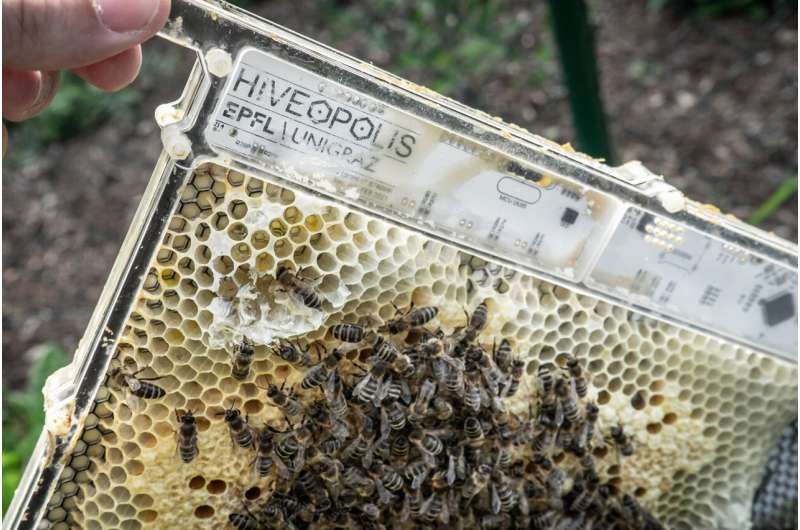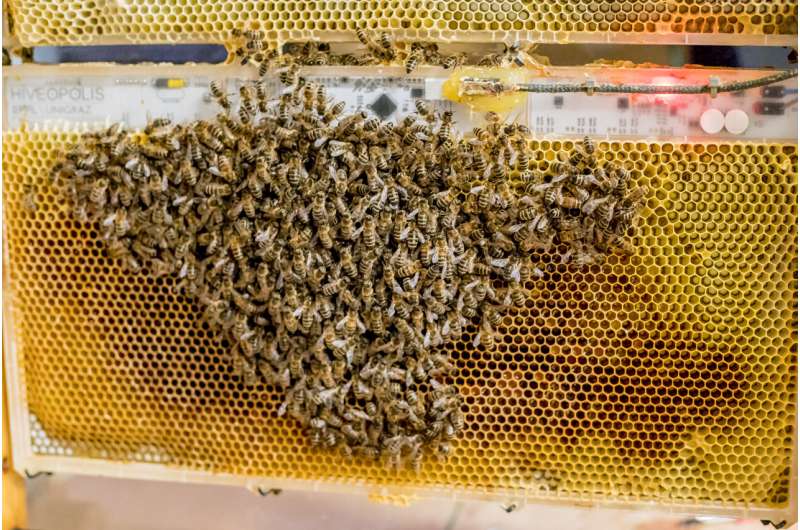March 23, 2023 report
This article has been reviewed according to Science X's editorial process and policies. Editors have highlighted the following attributes while ensuring the content's credibility:
fact-checked
peer-reviewed publication
trusted source
proofread
A robotic beehive to prevent honeybees from dying due to 'chill coma'

A combined team of roboticists and biologists from École Polytechnique Fédérale de Lausanne, in Switzerland and the University of Graz, in Austria, has developed what they describe as a robotic honeycomb to keep honeybees from dying due to "chill coma."
In their paper published in the journal Science Robotics, the group describes their roboticized honeycomb. Donato Romano, with BioRobotics Institute in Italy, has published a Focus piece in the same journal issue outlining the importance of developing interfaces between robotics and behavioral ecology and the work done by the team on this new effort.
Scientists first identified what has come to be known as "colony collapse" in 2006—whole colonies of bees were suddenly dying of unknown causes. Since that time, researchers have sought to uncover the reasons for such collapses and to find a way to prevent them. Some evidence that suggests colony collapse is likely due to a variety of factors, such as environmental toxins and natural pathogens that have grown in strength—parasitic mites, for example, that carry harmful viruses.
Researchers have also found that the combination of factors can lead to weakening of a colony, making it more difficult to survive a cold winter. Instances of "chill coma" have been observed, in which the colony stops buzzing in the hive, their only means of generating heat, leading to the colony dying of exposure.
Prior efforts to help domesticated honeybees survive the winter have involved placing heaters under hive boxes, which works to some extent, but not as well as it would seem. The problem, the researchers note, is the heat is external and unregulated.

To overcome the problem, the team built a robot into a hive box that directly sends heat thermally into a honeycomb—a gentle approach that does not surprise or alarm the bees. The robot monitors conditions in the hive and adjusts the amount of heat delivered accordingly.
The group tested their hive by enticing 4,000 bees to make it their home over the 2020–2021 winter and found that their efforts led to the survival of the hive during a cold snap when bees in other nearby hives died.
More information: Rafael Barmak et al, A robotic honeycomb for interaction with a honeybee colony, Science Robotics (2023). DOI: 10.1126/scirobotics.add7385
Donato Romano, The beehive of the future is a robot socially interacting with honeybees, Science Robotics (2023). DOI: 10.1126/scirobotics.adh1824
Journal information: Science Robotics
© 2023 Science X Network




















